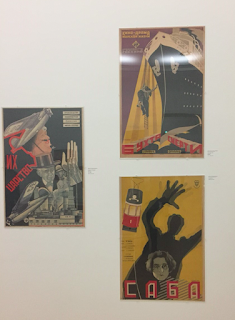Recently on a trip to Amsterdam there was an exhibition which really captivated me. It was called Russian Revolution & Film and was by an artist called Kazimir Malevich. The exhibition was full of collaged political propaganda posters inspired by film posters along legendary films and Suprematist paintings.
The Russian Civil war (1918 - 1921) was followed by a revolution in Russian film art. Over 100 hundred foreign films were released each year, in addition to domestic productions made by Eisenstein, Vertov, Pudovkin, and others. Approximately three hundred million cinema tickets were sold annually. Lenin astutely recognised the effect of new media such as radio and film, and considered mass communication to be the means for shaping s new, technologically and politically conscious individual. Films the medium of the future and was used for propaganda purposes as well as entertainment, as long as the latter did not entail the dissemination of Western capitalist values.
The nature and message of a film determined the appearance of its poster. Designers of film posters were typically less strict in their application of consecutive montage techniques, which they combined with stylised but recognisable depictions in order to capture a film's atmosphere. The new Soviet world manifested itself in these posters through recurring modern visual elements such as aircraft, cars and camera, but also in the visual montage of human limbs and machine parts.






No comments:
Post a Comment